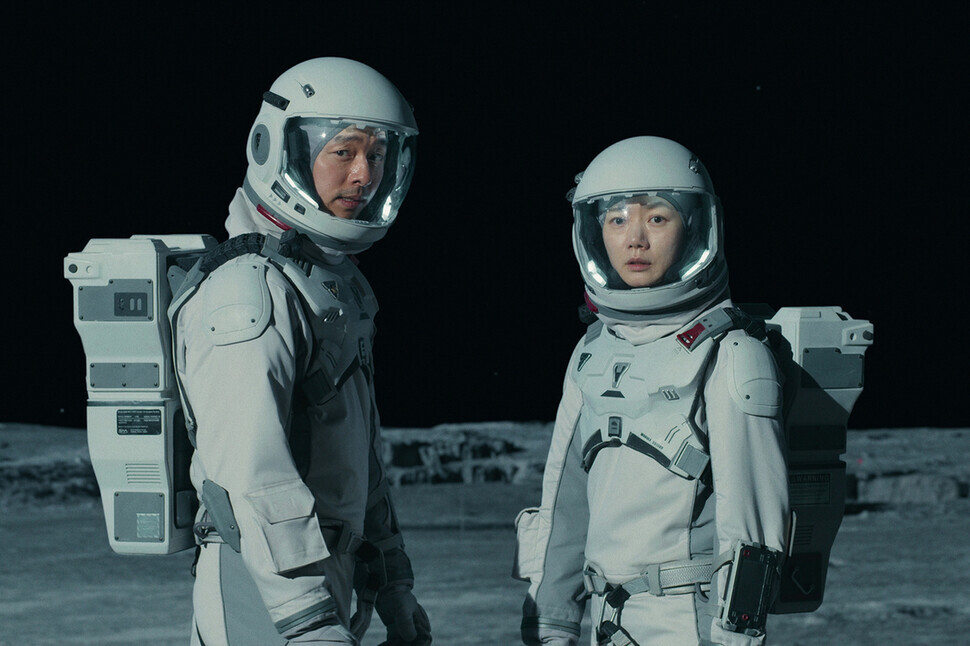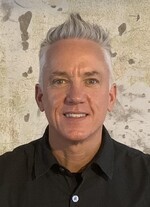hankyoreh
Links to other country sites 다른 나라 사이트 링크
[Column] “The Silent Sea”: Climate-pandemic drama in the Anthropocene


※Editor’s note: This article contains spoilers for the series “The Silent Sea.”
In the opening chapter of Kim Stanley Robinson’s latest science fiction novel “The Ministry for the Future,” a deadly heat wave hits a dense urban area in the northern Indian state of Uttar Pradesh. The air temperature at dawn is 38 degrees Celsius (103 degrees Fahrenheit) and climbs to 42 degrees Celsius (107 degrees Fahrenheit) as the sun rises.
These numbers are high, but not shocking. “The Ministry for the Future” begins in 2025, but in 2021 a heat dome in British Columbia produced record-breaking temperatures of 49.6 degrees Celsius (121 degrees Fahrenheit). And as the frequency and duration of heatwaves in Pakistan and India intensify, temperatures in this range are becoming the new norm.
But what makes Robinson’s fictional heat wave particularly deadly is the combination of high temperatures and high humidity, or “wet-bulb heat.” A heat of 42 degrees Celsius combined with 60 percent humidity is a toxic combination that can quickly lead to heatstroke and death. Wet-bulb heat isn’t like a sauna, it is a sauna.
Robinson is one of the most well-known authors in a new genre of literature known as climate fiction, or cli-fi, which refers to novels that imagine what life on this planet will look and feel like as the climate emergency intensifies. Climate fiction is like Walter Benjamin’s “Angel of History,” looking back from the future on a fossil-fueled ecological catastrophe which keeps piling wreckage upon wreckage across the planet, a catastrophe commonly referred to as the Anthropocene.
"The Ministry for the Future" opens with a catastrophic heat wave, while other recent cli-fi novels, such as Claire Vaye Watkins’ "Gold Fame Citrus" and Paolo Bacigalupi’s "The Water Knife," confront a related symptom of the climate emergency, the social and political wreckage caused by drought and desertification.
“The Silent Sea,” a new Netflix series written by Park Eun-kyo and directed by Choi Hang-yong, joins water crisis films like “Interstellar” (2014) and “Mad Max: Fury Road” (2015) in imagining “The Great Drought” — an ecodystopian future where the Han River has become a dust bowl, wildfires are raging, children are dying, and the wealth gap is filtered through the water gap. Images of water stations, where downtrodden citizens line up to pour their allotment into standardized 5-gallon containers, allude to the 1973 oil crisis. In the 20th century, people fought and died over oil. In the future, they will be fighting and dying over water.
“The Silent Sea” joins other climate dramas — “Fortitude,” “Years and Years,” “Snowpiercer,” — in which the action unfolds amidst a damaged planet. Bae Doona plays Dr. Song Ji-an, who joins a mission to an abandoned moon station to retrieve samples of lunar water, a potential solution to the Earth’s water crisis.
The highly classified samples could be a solution, but like Plato’s “pharmakon,” they are both potion and poison, as the cure is also a deadly virus that, like the pandemic currently rocking the planet, is extremely contagious and multiplies rapidly as it attacks the throat and lungs. Netflix released this climate-pandemic drama on Dec. 24, when many parts of the world began locking things down once again to contain the Omicron variant.
In “The Silent Sea,” capitalism appears to be working just fine. A hierarchical classification system separates the water-haves from the water-have-nots, and also determines who has access to quality health care. Neoliberal privateers have been trying to get rid of Korea’s National Health Insurance Service for a long time, and it looks like they finally succeeded. Feeble protests against the unequal distribution of water gather on the streets but are quickly gunned down by the military.
Hustle culture is alive and well in this future, as Capt. Han Yoon-jae, played by Gong Yoo, joins the moon mission in order to earn a higher water classification so he can save his young daughter (Kim Bo-min), who needs surgery to prevent her legs from being amputated. Back at the moon station, another young girl, Luna 073 (Kim Si-a), the traumatized survivor of a human testing program designed adapt humans to the water virus, is running wild.
The real voice of protest in “The Silent Sea” doesn’t come from the streets, but from the bodies of these two girls, who are demeaned and devalued, rendered disposable in this vicious new stage of disaster capitalism.
The violence played out on the bodies of these two young girls, with their muted sorrow, pain, and anger, helps explain the rage against the Anthropocene that is mobilizing young people from around the world whose futures are being amputated and rendered disposable by the political and economic elite of a Global North that refuses to do anything meaningful about climate change.
The ecodystopian world imagined by “The Silent Sea” is in the process of being made now, and the toothless pledges announced at the recent UN Climate Change Conference in Glasgow are helping it along. “The Silent Sea” doesn’t offer much in terms of hope, but like good climate fiction, it does offer a strong warning: Stop wasting resources looking for solutions on other planets and start making this one safe for future generations. There is no Planet B.
Please direct questions or comments to [english@hani.co.kr]

Editorial・opinion
![[Editorial] Does Yoon think the Korean public is wrong? [Editorial] Does Yoon think the Korean public is wrong?](https://flexible.img.hani.co.kr/flexible/normal/500/300/imgdb/original/2024/0417/8517133419684774.jpg) [Editorial] Does Yoon think the Korean public is wrong?
[Editorial] Does Yoon think the Korean public is wrong?![[Editorial] As it bolsters its alliance with US, Japan must be accountable for past [Editorial] As it bolsters its alliance with US, Japan must be accountable for past](https://flexible.img.hani.co.kr/flexible/normal/500/300/imgdb/original/2024/0417/6817133413968321.jpg) [Editorial] As it bolsters its alliance with US, Japan must be accountable for past
[Editorial] As it bolsters its alliance with US, Japan must be accountable for past- [Guest essay] Amending the Constitution is Yoon’s key to leaving office in public’s good graces
- [Editorial] 10 years on, lessons of Sewol tragedy must never be forgotten
- [Column] A death blow to Korea’s prosecutor politics
- [Correspondent’s column] The US and the end of Japanese pacifism
- [Guest essay] How Korea turned its trainee doctors into monsters
- [Guest essay] As someone who helped forge Seoul-Moscow ties, their status today troubles me
- [Editorial] Koreans sent a loud and clear message to Yoon
- [Column] In Korea’s midterm elections, it’s time for accountability
Most viewed articles
- 1[Column] The clock is ticking for Korea’s first lady
- 2[Editorial] When the choice is kids or career, Korea will never overcome birth rate woes
- 3S. Korea, Japan reaffirm commitment to strengthening trilateral ties with US
- 4Korea, Japan jointly vow response to FX volatility as currencies tumble
- 5[Guest essay] How Korea turned its trainee doctors into monsters
- 6Japan officially says compensation of Korean forced laborers isn’t its responsibility
- 7US exploring options for monitoring N. Korean sanctions beyond UN, says envoy
- 8Gangnam murderer says he killed “because women have always ignored me”
- 9[Editorial] As it bolsters its alliance with US, Japan must be accountable for past
- 10‘Right direction’: After judgment day from voters, Yoon shrugs off calls for change